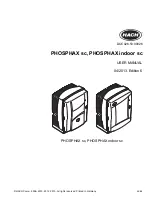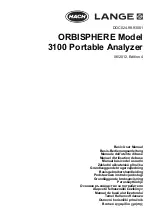
Remote Commands
R&S
®
ZNH
203
User Manual 1334.5985.02 ─ 02
Example:
Setting command:
INPut:COUPling GROund
Query:
INPut:COUPling?
Response: GRO
12.4.2.5
Strings
Strings must always be entered in quotation marks (' or ").
Example:
SYSTem:LANGuage "SCPI"
or
SYSTem:LANGuage 'SCPI'
12.4.2.6
Block Data
Block data are a transmission format which is suitable for the transmission of large
amounts of data. A command using a block data parameter has the following structure:
Example:
HEADer:HEADer #45168xxxxxxxx
ASCII character # introduces the data block. The next number indicates how many of
the following digits describe the length of the data block. In the example, the four fol-
lowing digits indicate the length to be 5168 bytes. The data bytes follow. During the
transmission of these data bytes all end or other control signs are ignored until all
bytes are transmitted.
12.4.3
Structure of a Program Message
A program message may consist of one or several commands. It is terminated by the
program message terminator which is the NL (New Line) character for LAN and USB
connections.
Several commands in a program message must be separated by a semicolon ";". If the
next command belongs to a different command system, the semicolon is followed by a
colon. A colon ":" at the beginning of a command marks the root node of the command
tree.
Example:
CALL InstrWrite(analyzer, "SENSe:FREQuency:CENTer 100MHz;:INPut:
ATTenuation 10")
This program message contains two commands. The first one is part of the SENSe
command system and is used to determine the center frequency of the instrument. The
second one is part of the INPut command system and sets the input signal attenuation.
If the successive commands belong to the same system, having one or several levels
in common, the program message can be abbreviated. For that purpose, the second
command after the semicolon starts with the level that lies below the common levels.
The colon following the semicolon must be omitted in this case.
SCPI Command Structure and Syntax
















































